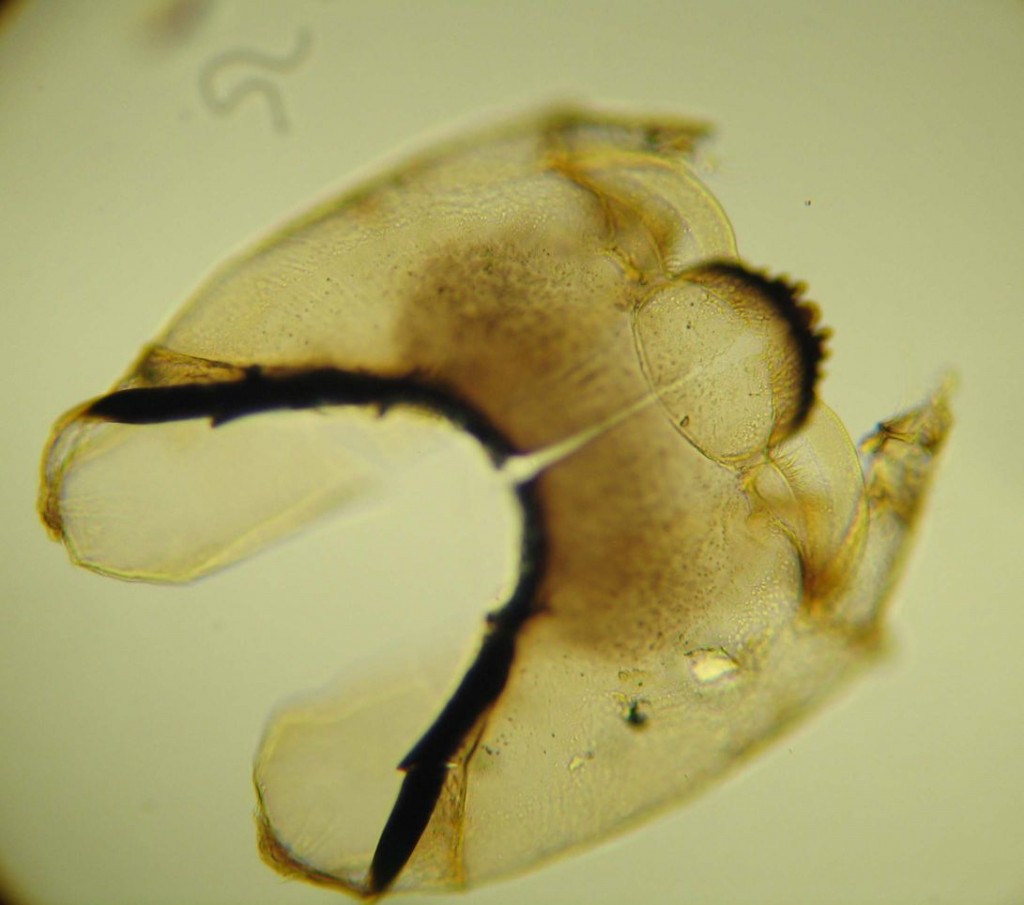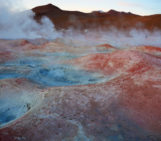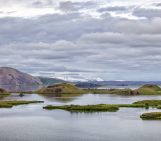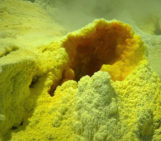This week’s Imaggeo on Mondays is Written by Yiming Wang, a paleoceanographer and paleolimnologist and keen photographer from the University of Kiel, Germany…
Námafjall is a high temperature geothermal area by Lake Myvatn in northeastern Iceland, which known for its sulphurous mud springs. My fascination of Iceland began during a fieldwork expedition in March 2004 as I began to collect data for my PhD thesis. Together with my supervisor, Mat Wooller, two Icelandic field specialists and several others from the US, we cored lake sediments across the island using the frozen lake ice as a drilling platform.
We studied chitinous midge fossils from the sediments to reconstruct past changes in lake water temperatures and climate since the last ice age. One of our field sites was the famous Lake Myvatn. Myvatn means “the lake of midges” due to the swarms of midges that emerge from the lake in the summer.
I remember how both my professional interest and imagination was kindled when as we passed by Námafjall on the way to the field site. Námafjall is an extremely active geothermal field due to the extensive volcanism in the area. The nearby Krafla volcano was last active between 1975 and 1984 and the area adjacent to Krafla is full of boiling mud pools and steaming fumaroles. For a geologist like me this is sort of a wonderland and ever since my first visit I wanted to go back to Námafjall again.
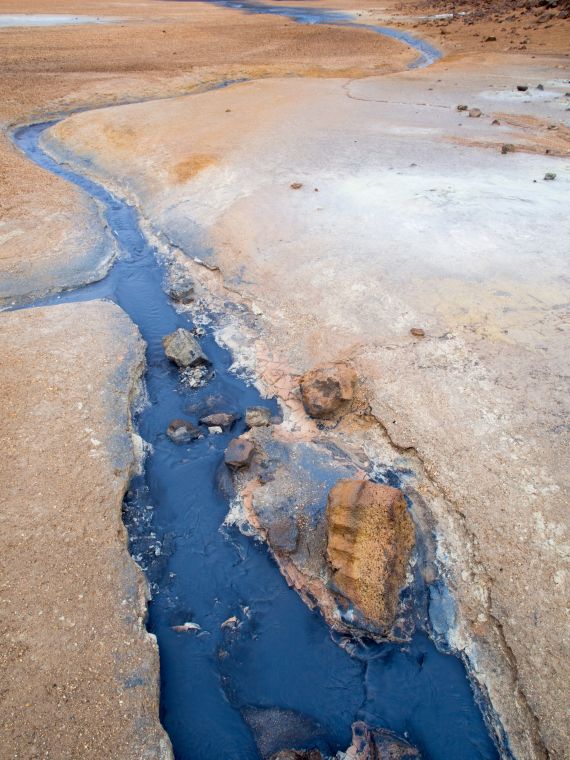
“Acid Stream” by Yiming Wang, distributed by the EGU under a Creative Commons licence.
Finally, eight years later in the autumn of 2012, I came back to this field of fumaroles on a leisure trip. This time the snow cover was gone and I could clearly distinguish the vast array of colours that painted the landscape, ranging from oranges and yellows to greens and blues. This palette of earthy and vivid colours mixed with distinct sulfurous odors and sounds from hissing steams and bubbling mud pools combine to form a peculiar scene found only in few places on this planet. This gives you a sense that this land is alive – geologically speaking, of course.
The rapid divergence of the Mid-Atlantic Ridge is responsible for the geothermal activity in Iceland. Námafjall is connected to the Krafla volcanic zone were geothermal heat derives from magma intrusions at shallow depths. The fumaroles emit steam as well as carbon dioxide, sulphur dioxide, hydrogen chloride and hydrogen sulphide. When mixed with the surface water, highly acidic “soup” is formed. The different colours and shades of the thermal stream and surrounding mud reflect the mineral content of the surrounding rocks. The colour grey derives mainly from clay minerals; iron gives brownish tones and sulphur yellow tones. The bluish shade depicted in the photo might be derived from copper sulphate.
By Yiming V. Wang, University of Kiel
References:
Axford, Y., G. H. Miller, K. Geirsdottir, and P. G. Langdon (2007), Holocene temperature history of northern Iceland inferred from subfossil midges, Quaternary Science Reviews, 26(25-28), 3344-3358.
Wang, Y., and M. J. Wooller (2006), The stable isotopic (C and N) composition of modern plants and lichens from northern Iceland: with ecological and paleoenvironmental implications, Jokull, 56, 27-38.
Wooller, M., Y. Wang, and Y. Axford (2008), A multiple stable isotope record of Late Quaternary limnological changes and chironomid paleoecology from northeastern Iceland, Journal of Paleolimnology, 40(1), 63-77.
Imaggeo is the EGU’s online open access geosciences image repository. All geoscientists (and others) can submit their images to this repository and since it is open access, these photos can be used by scientists for their presentations or publications as well as by the press and public for educational purposes and otherwise. If you submit your images to Imaggeo, you retain full rights of use, since they are licensed and distributed by the EGU under a Creative Commons licence.

